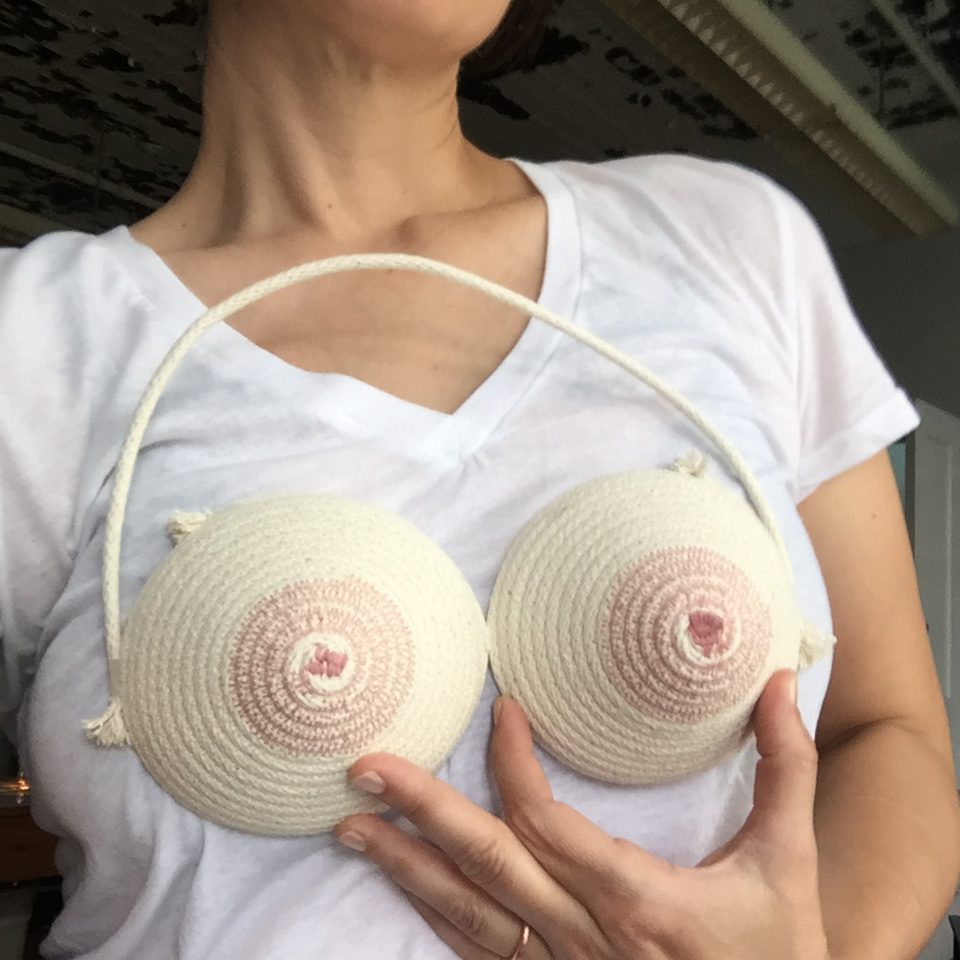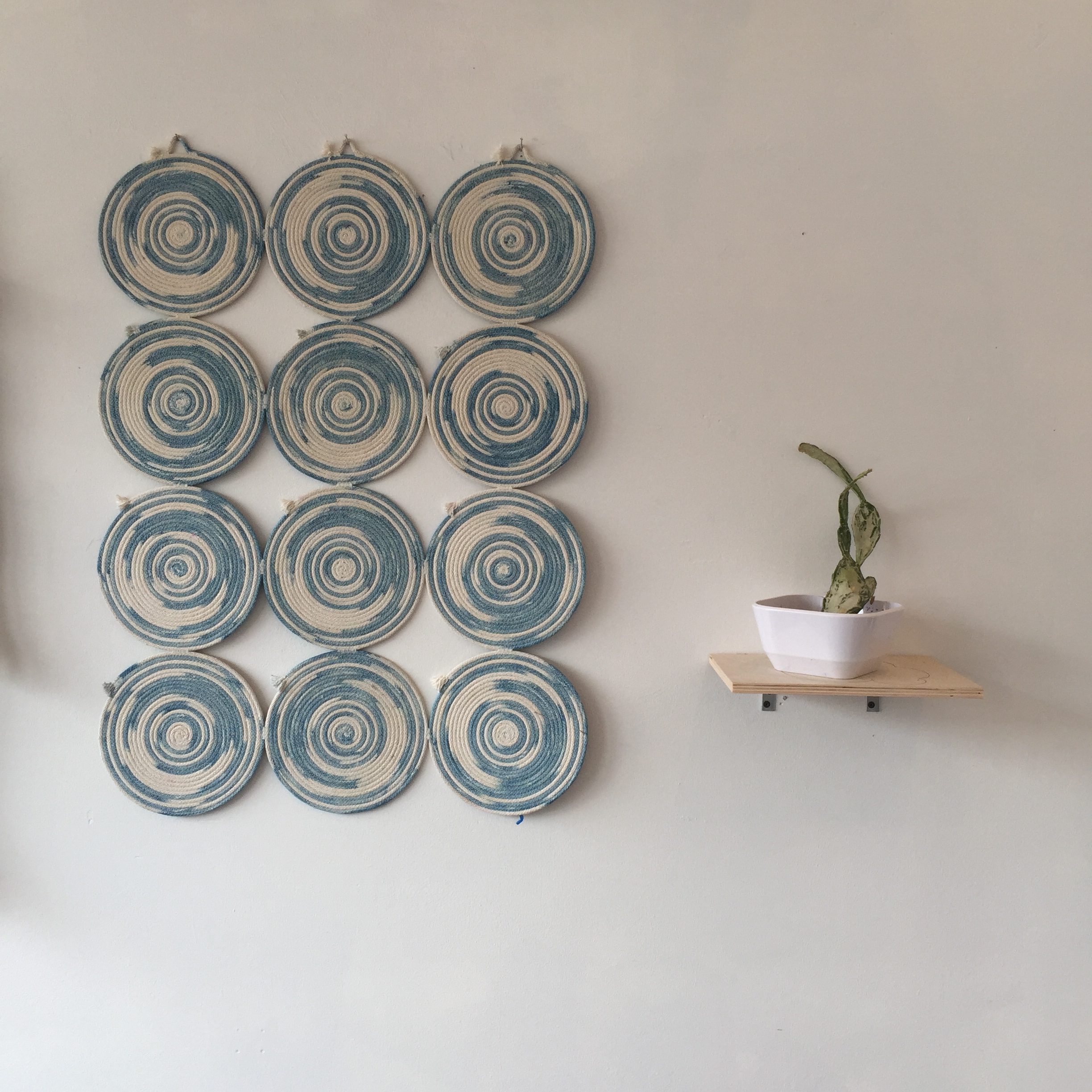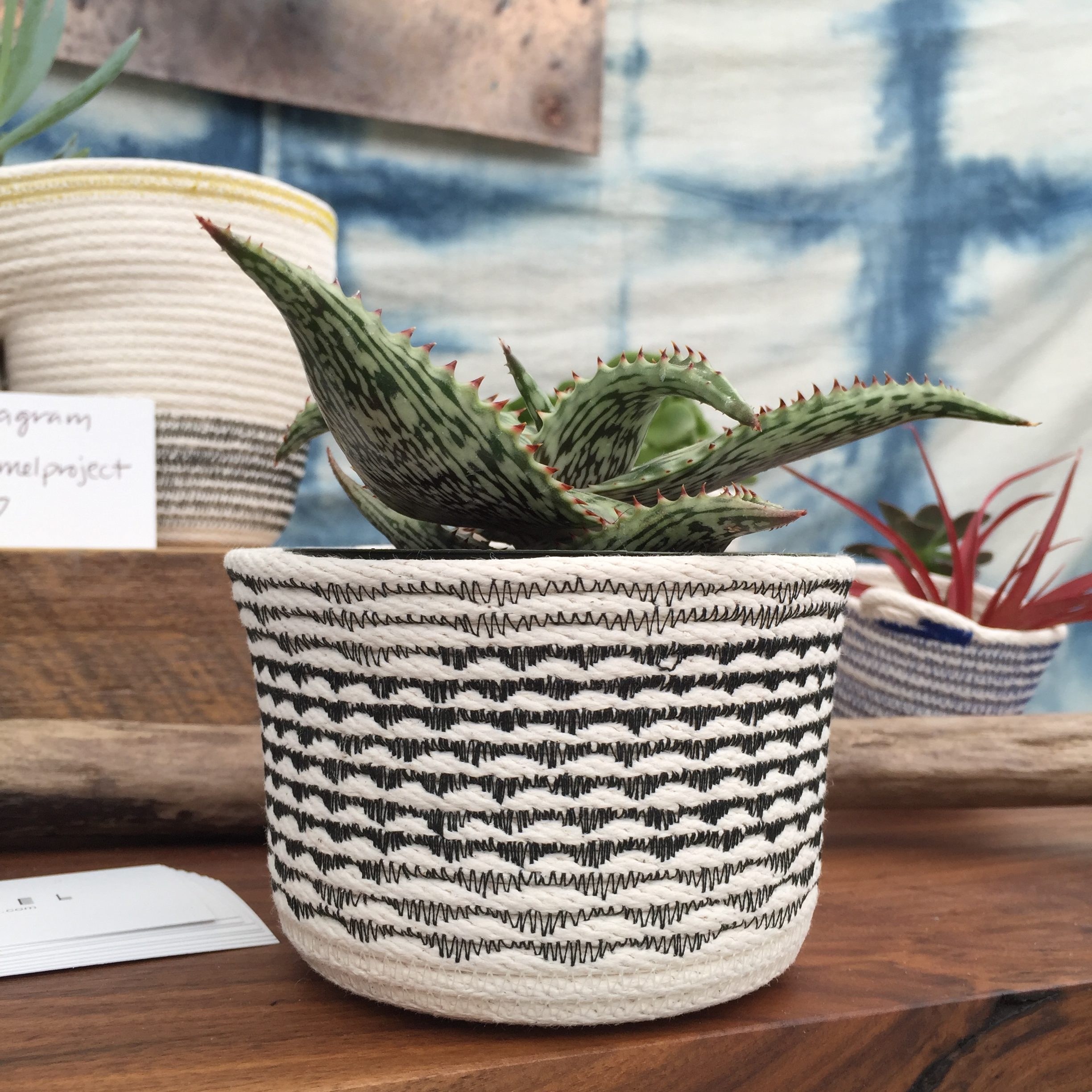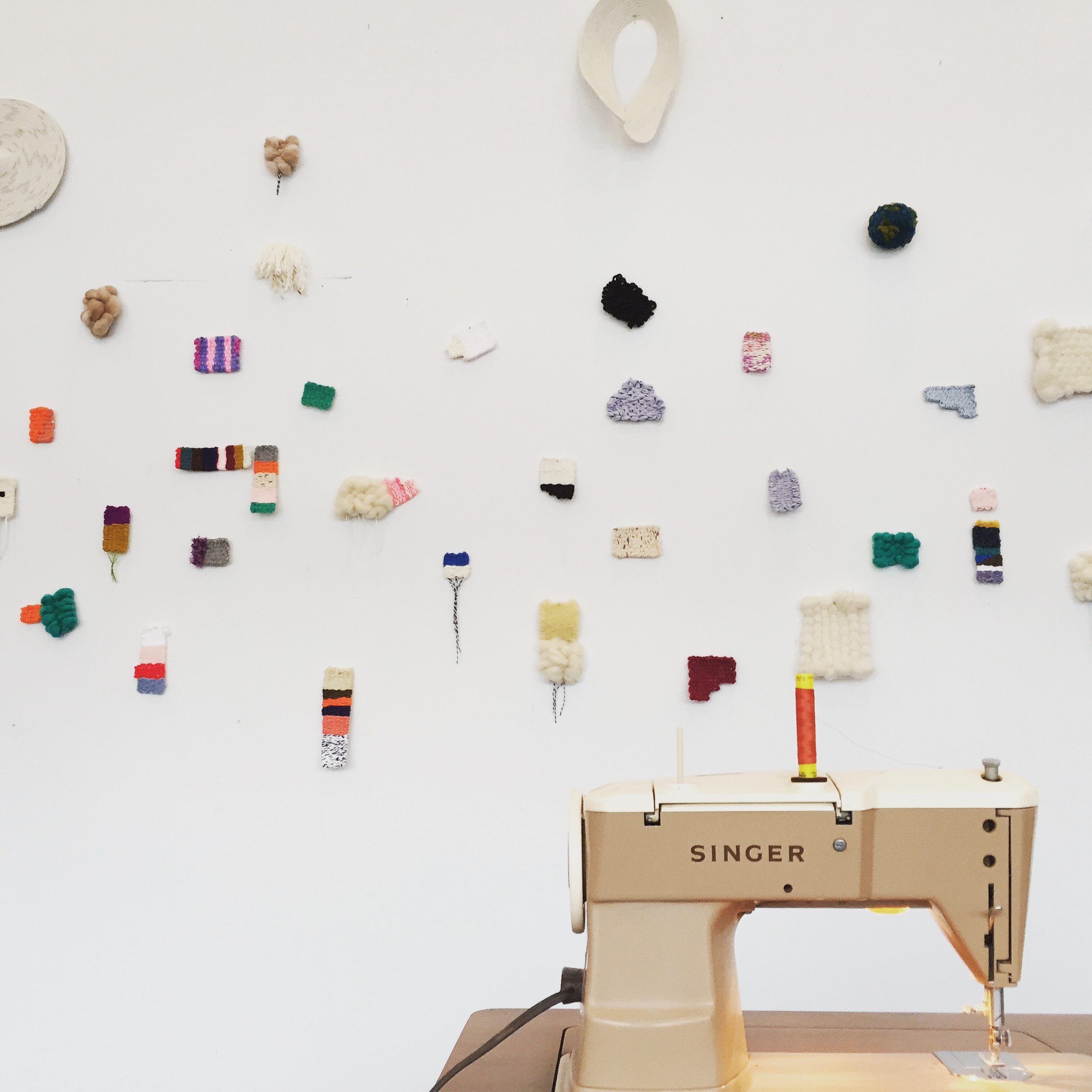June 16, 2016
The Enamel Project
Maker Spotlight

The Enamel Project is all about continual and evolving creative expression. Started by artist Angela Malchionno, Enamel is currently a weaving and workshop collection, but keep an eye out, because Angela is all about using this outlet to explore all her creative options!
Where did your business name come from? Is there an interesting history behind it?
ENAMEL was actually inherited from a pair of friends who are painters. They ran an alternative art space from their studio, hosting exhibitions and making these immersive hybrid installations of their own work. When I took over the space, I decided to keep the name. We had our super talented friends of WorkPlay do the logo. At the time, my idea was to keep the concept surrounding my business open ended – a space where craft, art, and design could meet. That’s why you’ll see the “enamel project” across social media and on the website. I like the idea of my process and studio as a kind of lab. Even though ENAMEL has grown primarily into a textile based business, I still approach my work in this way. Plus, I feel like the logo is too rad to change!

When/Why did you start working in this particular craft/field?
I’m a lapsed academic – I was on the career path toward tenure track positions in printmaking for years. I had this moment a couple of years ago where I downsized my studio, sold my flat files, and became something of a monk for a little bit. I was really unsure about where I was going and frustrated that I hadn’t landed a job yet. When my current position was changed to part time, I became really focused on redefining what art and being a maker meant to me, without concern for my CV or career. It was terrifying. I felt very lost. But I can’t sit still for long, and built Enamel as way to physically and conceptually embody the changes I felt happening. I had a lot of questions, and the studio became a place to manufacture answers. I learned shibori and how to mix an indigo vat, and from there became very invested in textiles and and how to evolve my designs. Because I have a background in art, I feel like I have a good foundation, but in so many ways I’m a newbie and like to keep it that way. I feel like I have a freedom now that I didn’t have before.

What do you think sets your designs apart from others?
I believe that physically my pieces are sturdy and well finished. I try to create shapes and textures I haven’t seen yet. In the wall hangings, you see that the corded process meets macrame in this textile mash up that I think is super exciting. I hope that my work is in conversation with traditional textile art and more contemporary pieces – like Eva Hesse’s Ringaround Arosie, 1965.


Have you sacrificed anything to create your business? If so, what was it, and do you have any regrets?
I don’t know if sacrifice is quite the right word, because I’m very happy to do what I love daily. I think that there are lots of things about the way that my husband and I live that are really about accommodating our choice to be working artists. We have one car, and reside in a city that is far from both our families because it allows us to pursue our work in a supportive (read: low cost of living) community. I guess the biggest thing I’ve had to sacrifice is the career path I was on for the uncertainty of my current path. I still struggle with this from time to time, and there are moments where I regret not trying for one more year of campus visits and potential jobs. When I have these pangs, I look around at what has flourished in our space, let go, and feel a sense of peace and a certainty that I made the right choice.

How does your city live in influence your work?
St. Louis is a city that is constantly changing. My favorite thing about living here is when someone rehabs a building in my neighborhood – especially if it’s on the way home. That way, I can see the daily changes going down. First, the tuckpointing. Then the old plaster comes out. Then the concrete pathways get poured, grass seed goes down. What was a crumbling mess has a brand new life. I just love that – watching the process. I believe everything has potential – when others see a boarded up house, I see what it could become. So St. Louis is a great place to be a maker because you feel like the environment itself backs you up. And it’s super cheap to live here … and there’s really great food. We’ve got plenty of room, come on down!

What made you take this leap into being your own boss?
Short answer: Existential crisis followed by financial crisis, existential crisis persists, financial crisis somewhat averted…
What are some inspirations for your work?
William Morris, Dat So La Le, Sheila Hicks, Doug Johnston, Adolf Loos, John Porcellino… Any kind of African textile or Native American art – the St. Louis Art Museum has a great collection of both and I love to revisit them from time to time. Museums that have a dedicated room from an apartment in Paris, 1736 set up for display. Annie Albers. Bauhaus. Hiroshige. Too many to name!

What are some tips or suggestions you’d like to offer to fellow makers?
Be a perfectionist, but don’t feel like you have to monetize every idea you have. You might love to knit, but it doesn’t mean your fall line of sweaters should launch next month. What is it about the technique that really motivates you? Experiment to stay inspired. For example, my baskets are my biggest sellers, but they are, in a way, my “day job.” Creating them helps support larger projects and innovation for more ambitious, and probably less lucrative, pieces that are simply challenging and fun to make.
